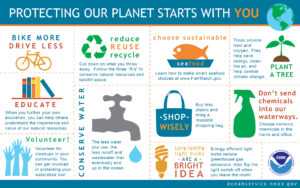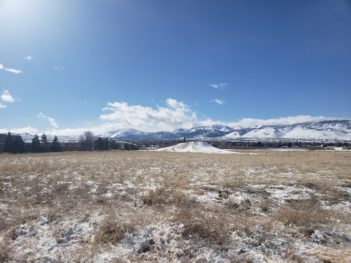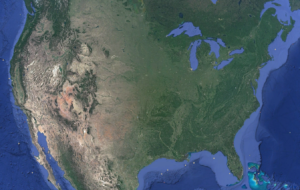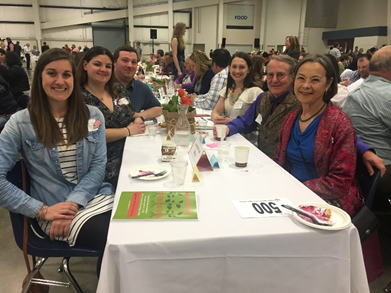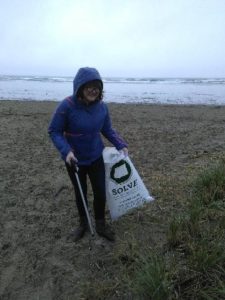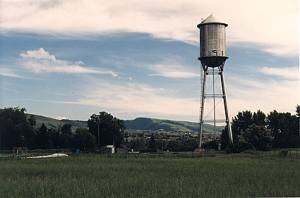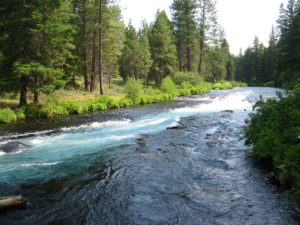Are aquifers public or private property? The question is more complicated than it first appears! To answer the question, one must dive down into the fundamental origins of our legal system, fraught with complicated Latin phrases, just like the dangers of the deep itself!
Aquifers are 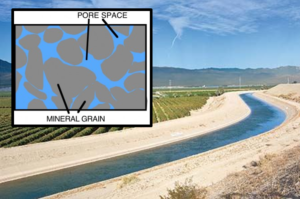 scientifically defined as a “body of permeable rock which can contain or transmit groundwater.”[1] However, the word, in its common use, refers to the groundwater, not the permeable rock that actually makes up the aquifer. Traditionally, rocks, soil, and dirt are considered private property under the ad coelum doctrine, making them private property owned by the overlying landowner.[2] Ownership under this doctrine reaches from the atmosphere above to the center of the Earth, shaped like vertical column. However, water is traditionally seen as commonly owned by the public, available for private use under the ferae naturae doctrine. Under this doctrine, water is commonly owned, like wild animals, but can be captured and privately used, like by hunting and capturing it. The various water doctrines, including prior appropriation, the rule of capture, and riparianism, all derive from a negotiation between these two doctrines.
scientifically defined as a “body of permeable rock which can contain or transmit groundwater.”[1] However, the word, in its common use, refers to the groundwater, not the permeable rock that actually makes up the aquifer. Traditionally, rocks, soil, and dirt are considered private property under the ad coelum doctrine, making them private property owned by the overlying landowner.[2] Ownership under this doctrine reaches from the atmosphere above to the center of the Earth, shaped like vertical column. However, water is traditionally seen as commonly owned by the public, available for private use under the ferae naturae doctrine. Under this doctrine, water is commonly owned, like wild animals, but can be captured and privately used, like by hunting and capturing it. The various water doctrines, including prior appropriation, the rule of capture, and riparianism, all derive from a negotiation between these two doctrines.
The law continues to navigate the paradox of aquifer ownership: Is the aquifer the water or the rocks holding it? At least one court is now facing this challenge. The California case Agua Caliente Band of Cahuilla Indians v. Desert Water Agency, et al places this question at the heart of the litigation.[3] The Agua Caliente Band of Cahuilla Indians (“Tribe”) filed a suit to protect the aquifer underlying their reservation from groundwater use that threatened to cause subsidence, contamination degrading water quality, and aquifer recharge activities that filled storage space with foreign water. As part of the Tribe’s claim, they assert that the Tribe owns pore spaces (storage) within the aquifer that are being permanently destroyed by subsidence. The Tribe argues under property principles that the pore spaces are a part of the reservation under principles of the ad coelum doctrine. The opposing parties argue that the pore spaces are publicly owned, and the Tribe cannot claim injury to something they never owned or, in the opposing argument, “captured” under the ferae naturae doctrine. While the trial is still ongoing, the court will eventually have to face the core question: Are aquifer pore spaces public or private property?
While the debate over ancient Latin phrases, injury, and rocks may seem like an uninteresting legal squabble, the results of the case could have real ramifications for many groundwater issues! For example, could an artificial recharge project seeking to replenish depleted aquifers actually be trespassing, if aquifers are privately owned? Or, if publicly owned, can a neighbor to the recharge project whose land is inundated with water have shaky ground to make a claim, since they do not own the pore spaces? Courts will likely have to wrestle with these questions for many years to come.
Stay tuned to Schroeder Law Offices’ Water Law Blog for more news that may affect you!
[1] Oxford Online Dictionary,https://en.oxforddictionaries.com/definition/aquifer
[2] https://en.wikipedia.org/wiki/Cuius_est_solum,_eius_est_usque_ad_coelum_et_ad_inferos
[3] The case is presently before the United States District Court for the Central District of California, Docket No. ED CV 13-00883-JGB-SPX. The complaint was filed on May 14, 2013.




